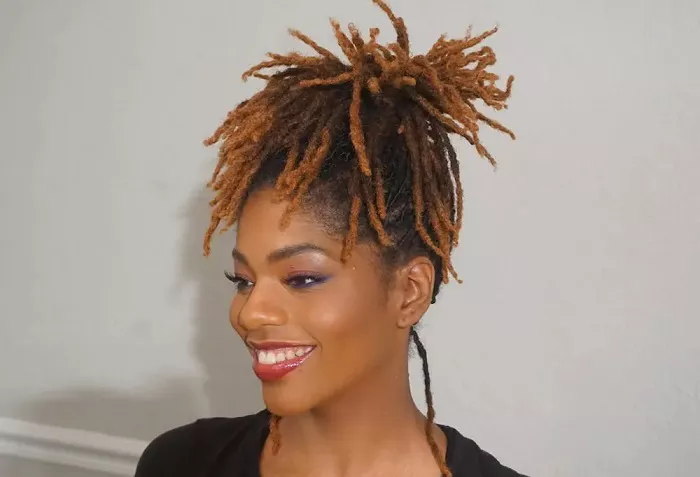Dreadlocks, also known as locs, are a unique and stylish hairstyle that can be created on short hair. They offer a distinct look that is both edgy and trendy. While the process may seem intimidating at first, with the right tools, products, and techniques, you can successfully dreadlock your short hair at home. In this article, we will guide you through the step-by-step process to achieve beautiful dreadlocks on short hair.
Preparing Your Hair
Before you start the dreadlocking process, it is essential to prepare your short hair properly.
Washing and Conditioning:
Wash your hair thoroughly with a clarifying shampoo. This helps to remove any dirt, oils, or product buildup that could interfere with the dreadlocking process. Make sure to rinse the shampoo out completely. Then, apply a lightweight conditioner to the mid-lengths and ends of your hair. Avoid the roots as much as possible, as conditioner near the roots can make it difficult for the hair to knot and form dreadlocks. Rinse the conditioner out gently. Let your hair dry completely. You can either air-dry it or use a blow dryer on a low heat setting.
Combing and Detangling:
Use a wide-toothed comb to carefully detangle your hair. Start from the ends and work your way up to the roots. This step is crucial to ensure that your hair is free from knots and tangles before you begin the dreadlocking process. If you have any stubborn tangles, you can use a small amount of detangling spray or conditioner to help loosen them.
Sectioning the Hair:
Divide your short hair into small, even sections. The size of the sections will depend on the thickness and length of your hair. For very short hair, you may need to make smaller sections to ensure that the dreadlocks form properly. Use hair clips or small rubber bands to keep the sections separate. You can start from the front of your head and work your way back, or vice versa.
The Dreadlocking Process
There are several methods you can use to create dreadlocks on short hair. One popular method is the backcombing and palm rolling technique.
Backcombing:
Take a small section of hair and hold it upright. Using a fine-toothed comb, start backcombing the hair from the ends towards the roots. This means you are combing the hair in the opposite direction of its natural growth. Backcombing creates knots and tangles in the hair, which is the foundation for dreadlocks. Be sure to backcomb evenly throughout the section, making it as compact as possible. As you backcomb, you will notice the hair starting to form a small, tangled mass.
Palm Rolling:
After backcombing a section, it’s time to palm roll. Place the backcombed section between your palms and roll it back and forth. This helps to shape the dreadlock and make it more cylindrical. Apply a small amount of dreadlock gel or wax to your palms before palm rolling. The gel or wax helps to hold the hair in place and gives the dreadlock a neater appearance. Roll the dreadlock firmly but not too tightly, as this could cause discomfort or damage to your scalp. Continue palm rolling until the dreadlock is smooth and well-formed.
Tying the Ends:
Once you have palm rolled a dreadlock, you can tie the end with a small rubber band or a piece of thread. This helps to keep the dreadlock from unraveling. Make sure the tie is secure but not too tight, as you may need to remove it later as the dreadlock matures.Repeat the backcombing, palm rolling, and tying process for each section of hair until you have created all the dreadlocks on your short hair.
Maintaining Your Dreadlocks
After creating your dreadlocks, proper maintenance is essential to keep them looking their best.
Washing Dreadlocks:
You can wash your dreadlocks, but it’s important to do it carefully. Use a residue-free dreadlock shampoo. Dilute the shampoo in a bucket of water and then pour the mixture over your dreadlocks. Gently massage the scalp and the dreadlocks to remove any dirt or buildup. Rinse thoroughly with clean water. Avoid using regular shampoos as they can leave behind residue that can make your dreadlocks look dull and cause them to clump together.
Drying Dreadlocks:
Let your dreadlocks air-dry naturally. Avoid using a blow dryer as the heat can damage the hair and cause the dreadlocks to become brittle. You can gently squeeze out any excess water with a towel, but be careful not to rub or wring the dreadlocks.
Retwisting:
As your dreadlocks grow and mature, they may start to loosen or become fuzzy. To maintain their shape, you can retwist them. Apply a small amount of dreadlock gel or wax to your fingertips and then twist the dreadlock in the same direction as it was originally formed. This helps to tighten the dreadlock and keep it looking neat. You can do this every few weeks or as needed.
Protecting Your Dreadlocks at Night:
To prevent your dreadlocks from getting flattened or damaged while you sleep, you can wear a satin or silk scarf or a dreadlock cap. These materials are smooth and reduce friction, helping to keep your dreadlocks in good condition.
Conclusion
Dreadlocking short hair can be a fun and creative way to express your personal style. By following the steps of preparing your hair, using the backcombing and palm rolling technique, and maintaining your dreadlocks properly, you can achieve a unique and stylish look. Remember, the process takes time and patience, and it may take a few weeks or months for your dreadlocks to fully mature and develop their own character. With consistent care and attention, your short dreadlocks will be a head-turning hairstyle that showcases your individuality and fashion sense. So, don’t be afraid to give it a try and embark on your dreadlocking journey.

